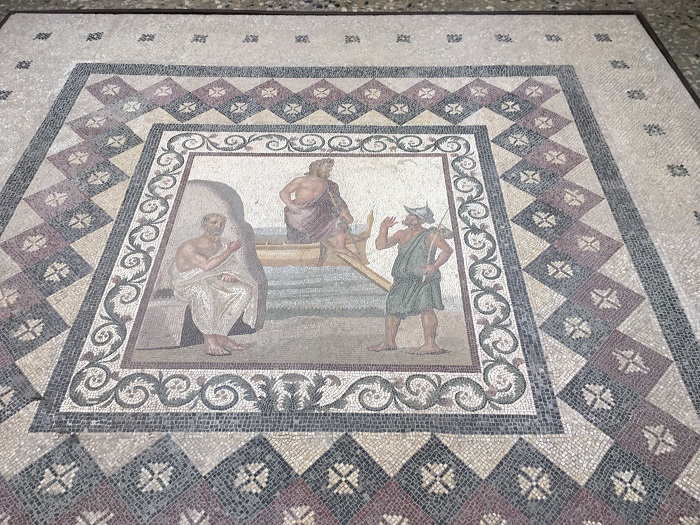
Come marvel with Thor and me at the treasures of ancient culture on the island of Hippocrates and healer-god Asklepios.
NOTE: Since our recent trip to Greece to research more settings for my novel-in-progress, THE ARIADNE DISCONNECT, Thor and I knew we had to return to this magical region. My first entry in this new blog series posted here on Saturday, 10/20/2018. It gives an overview of our rambles from Athens to seven islands in the Dodecanese and Cyclades groups, ending our ferry-hopping pilgrimage on the anciently sacred island of Delos.
Among the rich setting of ancient and Medieval sites woven into modern Kos Town, the small archeology museum is a special jewel. We were amazed at the range of offerings on display, and grateful that the museum had reopened after a period of closure (possibly due to a recent earthquake that had damaged and closed some other buildings in town). Many of the statues and mosaics reflected the island’s heritage as the birthplace of Hippocrates, “father of modern medicine,” who honored the healer-god Asklepios as he established healing sanctuaries and teaching centers. The mosaic above is from the Roman House of Asklepios, dating from around 250 AD, depicting the arrival of the god on Kos. He is greeted by a citizen of Kos, while Hippocrates is seated at left.
Since we visited a reconstructed Roman villa in last week’s blog post, I’ll start with the museum’s collection of beautiful marble statues depicting the Greek gods as still honored by the Romans around 200 AD. First up, Artemis, goddess of the hunt and wilderness:
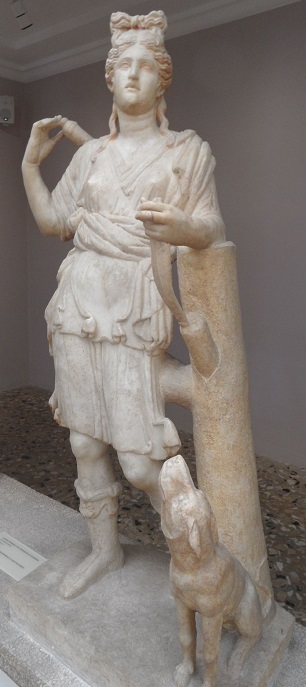
Next, Asklepios, unfortunately missing his head. He’s assisted by one of his sacred healing serpents, with his son the daemon Telesphoros (god of convalescence) at his feet. We’ll hear more about Asklepios and Hippocrates’s healing practices next week when we visit the Asklepion Sanctuary on Kos.
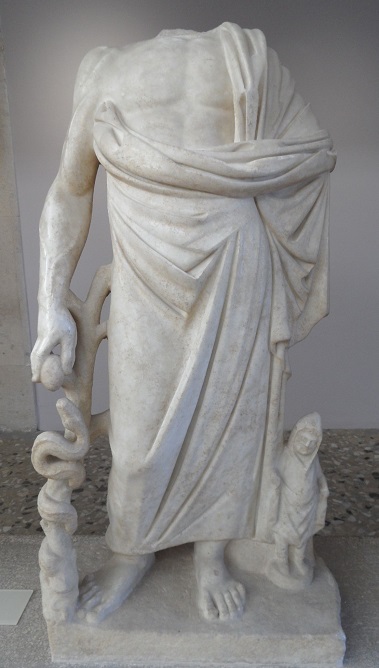
As I mentioned last week, the cult of Dionysos was popular with the Romans, who honored his spirit of ecstatic revelry, and of course his gift of wine. Here he’s partying with his usual bromies: a satyr, Pan, and Eros (Cupid), with his sacred panther at his feet.
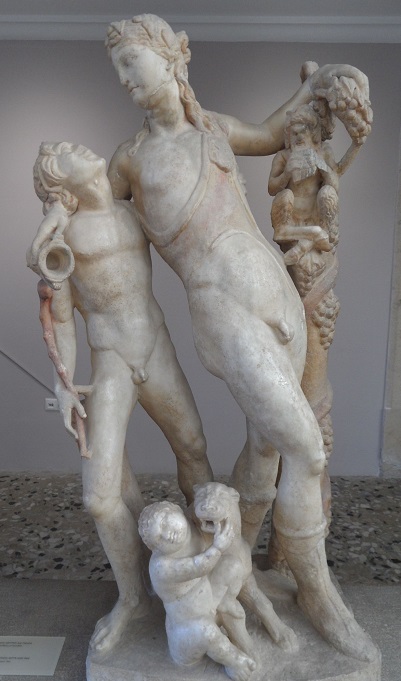
Hermes, the messenger of the gods with his winged sandals, carried a (here, broken) caduceus (or kerykeion) as did Asklepios, who established the snake-wrapped staff as a sign of medicine still used today. For Hermes, it signified his official messenger role.
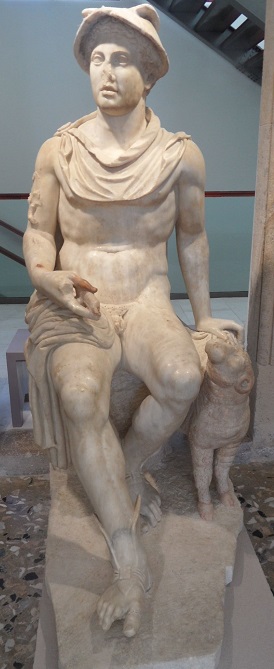
Hygeia was the daughter of Asklepios. The important goddess of hygiene, she’s accompanied by Hypnos, who aided in dream-inducing, healing sleep for the sick. She carries another sacred serpent and holds an egg, a common symbol for the healing deities.
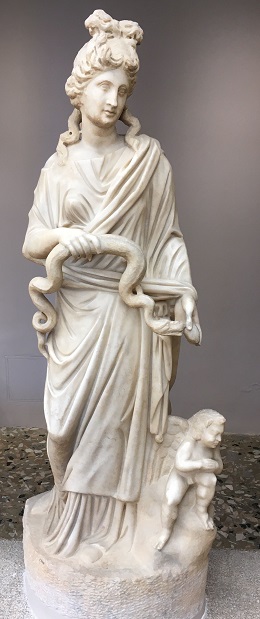
Most of these Roman-era statues (all from around 200 AD) were discovered in the ruins of the “Villa of the Rape of Europa” that reflected the myth of Zeus in the form of a bull abducting the mortal Europa. He swam with her on his back to Crete, where she supposedly became the first queen there and bore several of his children.
Moving back in time to the Greek cultures before the Roman arrival, there is evidence of Neolithic settlement of the island, from around 5300-1365 BC, including this pottery vessel:
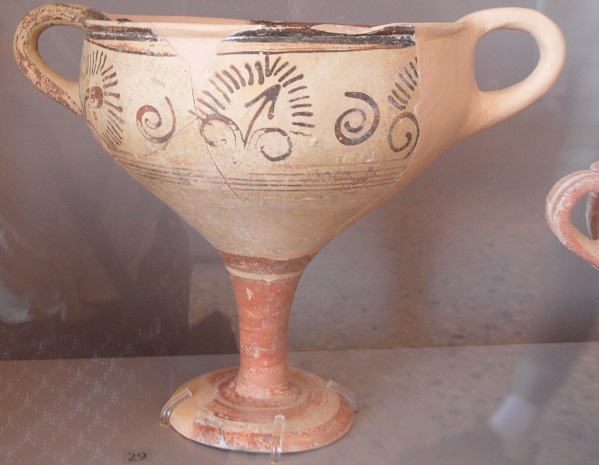
This sword and the spear date from around 1420 BC:

This krater with goats and birds is dated at around 1200 BC. The goats have the long curved horns of the wild “kri-kri” that now are found mostly on Crete, where I was lucky enough to see them in the wild Gorge of Samaria:
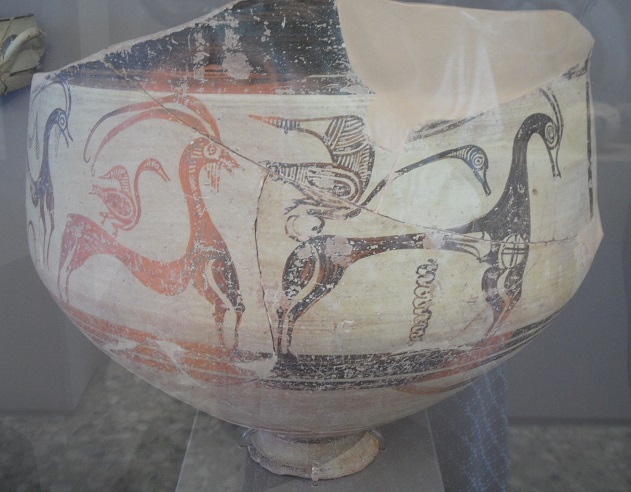
More pottery, from the Geometric Period:
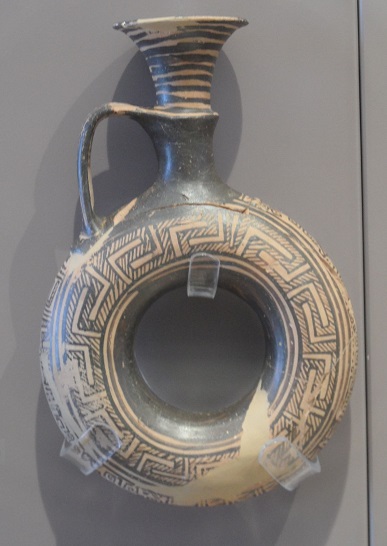
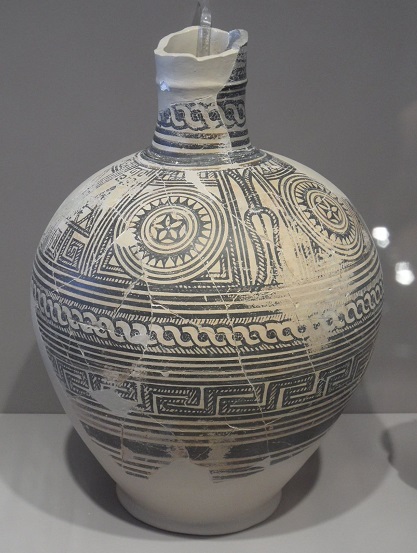
The symposia were gatherings of aristocratic Greeks, where they enjoyed drinks, music, conversation, and apparently more sensual pleasures, as evidenced by this relief carving from around 500 BC. The museum description is enlightening.

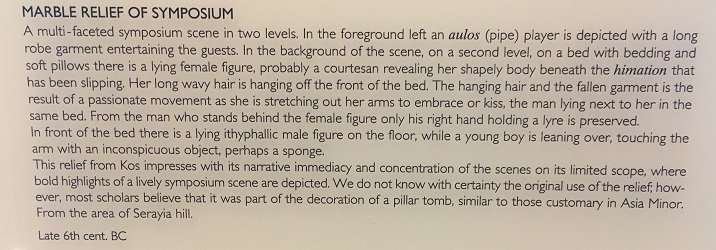
A larger-than-life statue of Hippocrates, from around 400 BC, presides over the museum entrance:
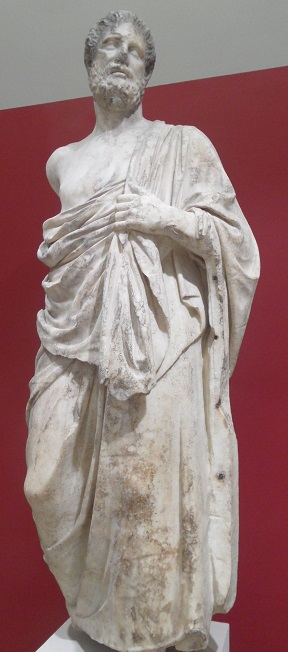
Also these beautifully detailed figures of women from the same period. The draperies are exquisite, especially in the second one. Her marble seems to glow with its own light. The remnants of pigment suggest that the statue was probably painted, as recent analyses reveal about many of the Greek statues. I can’t help preferring the luminous beauty of the unpainted marble.
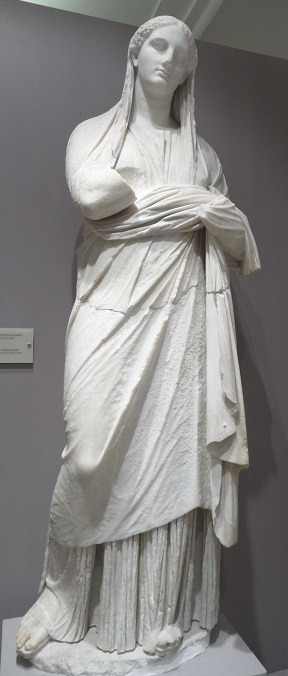
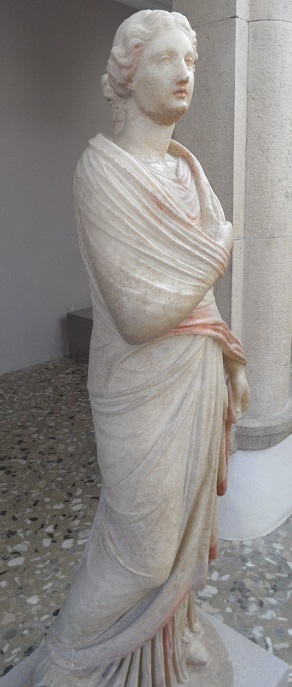
This lovely frieze features the Three Graces, or Charites. They have been identified as either the daughters of Zeus and Eurynome — or daughters of Dionysos and Ariadne, which resonates with my novel-in-progress. Note the satyr spying on them from the upper left:
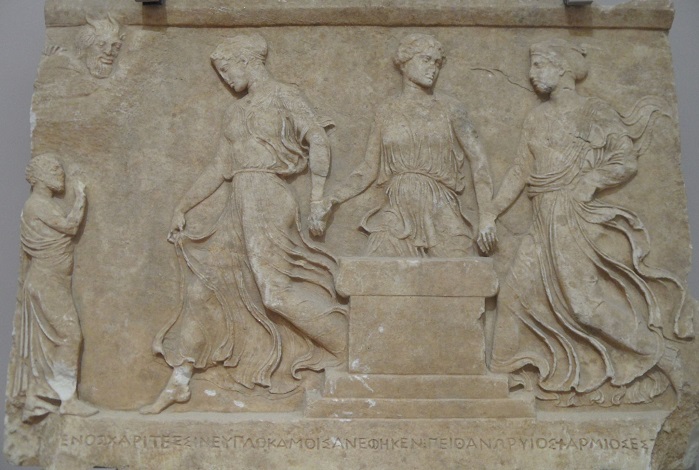
The museum also features many household items, including these loom weights from around 200 BC:
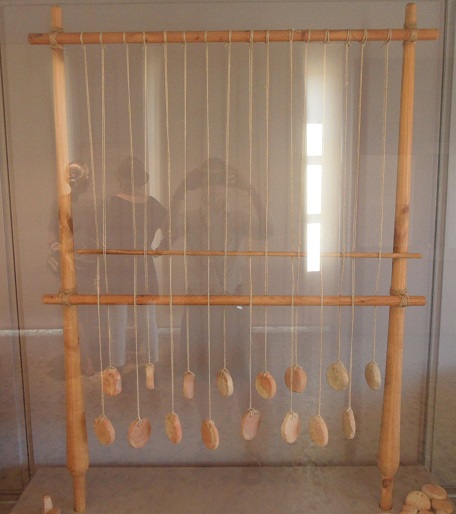
I was fascinated by these early medical implements and unguent jars:
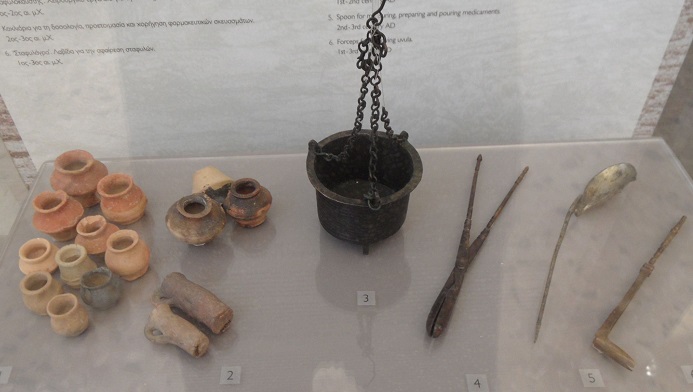
A Harpy vase featuring the mythical half-bird, half-woman:
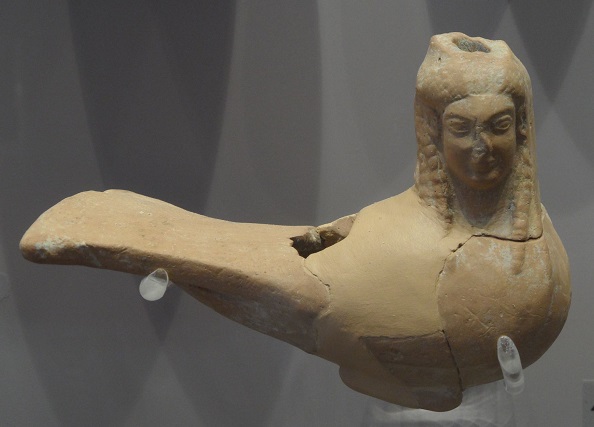
This was an interesting glimpse of the dark side of some of the cults:

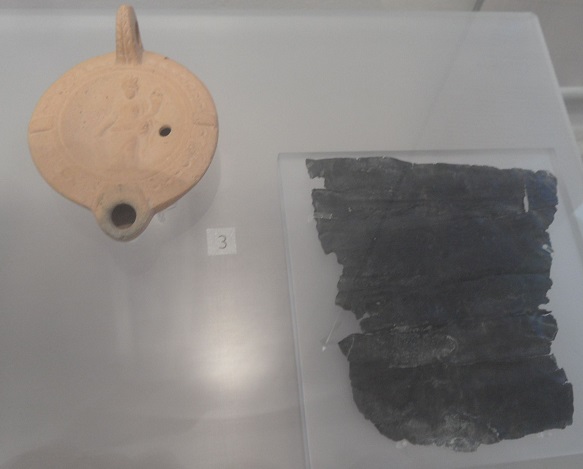
Of course, the aristocratic women enjoyed their jewelry:

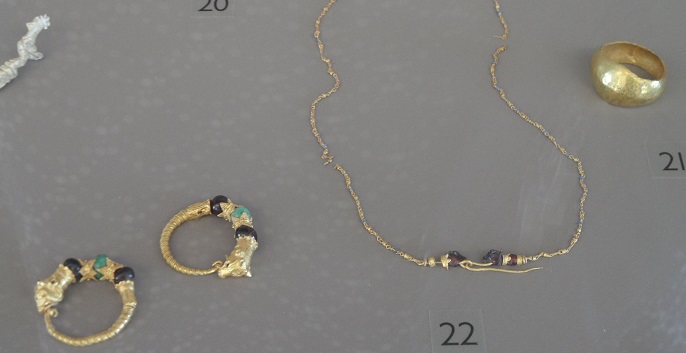
One of my favorite pieces in the museum is this red-figured pelike featuring an Amazonomachia from around 450 BC. There is evidence that the Amazon women warriors did exist, in the Scythian region, and there were encounters with Greek traders and warriors. Stories and art about them became very trendy during this period. These powerful women inspired the “New Amazons” or Corybantes in my Ariadne novels, which I have dedicated to our dearly-missed Vonda McIntyre. Extraordinary novelist, she was a generous mentor to many of us authors at Book View Cafe publishing group, which she co-founded. She recommended to me the research book “The Amazons” by Adrienne Mayor, which describes the exact attire shown in this vessel (the Amazon is on the left, in her horse-riding leggings). Thank you, Vonda, for your many gifts of friendship!
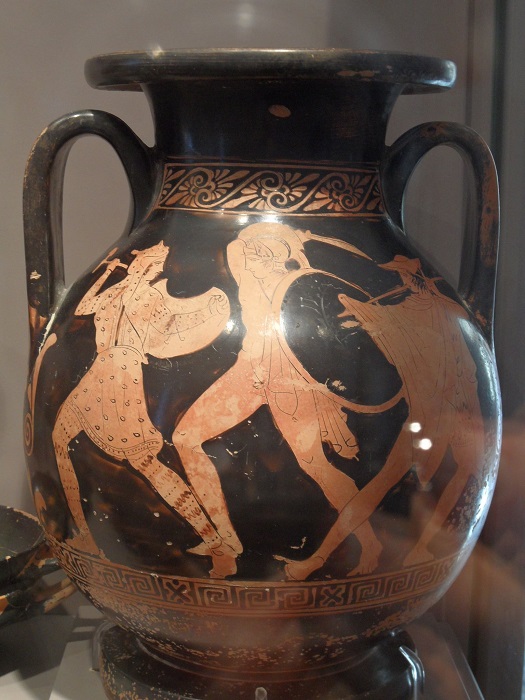
Next week: The healing Sanctuary of Asklepios.
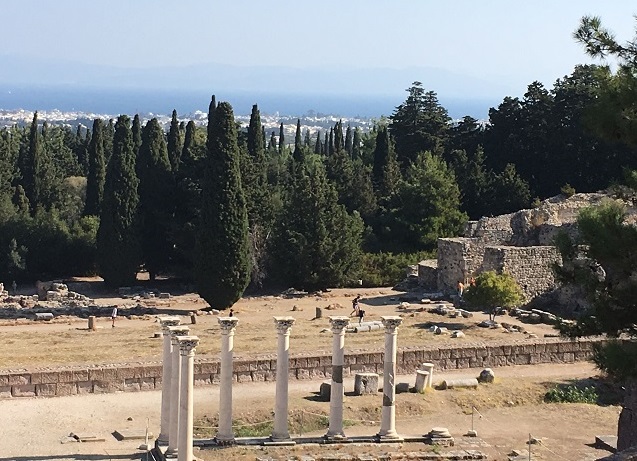
*****
You will find The Rambling Writer’s blog posts here every Saturday. Sara’s latest novel from Book View Cafe is available in print and ebook: The Ariadne Connection. It’s a near-future thriller set in the Greek islands. “Technology triggers a deadly new plague. Can a healer find the cure?” The novel has received the Chanticleer Global Thriller Grand Prize and the Cygnus Award for Speculative Fiction. Sara has recently returned from another research trip in Greece and is back at work on the sequel, The Ariadne Disconnect. Sign up for her quarterly email newsletter at www.sarastamey.com

1 thought on “The Rambling Writer Explores More Greek Islands, Part 22: Kos Museum”